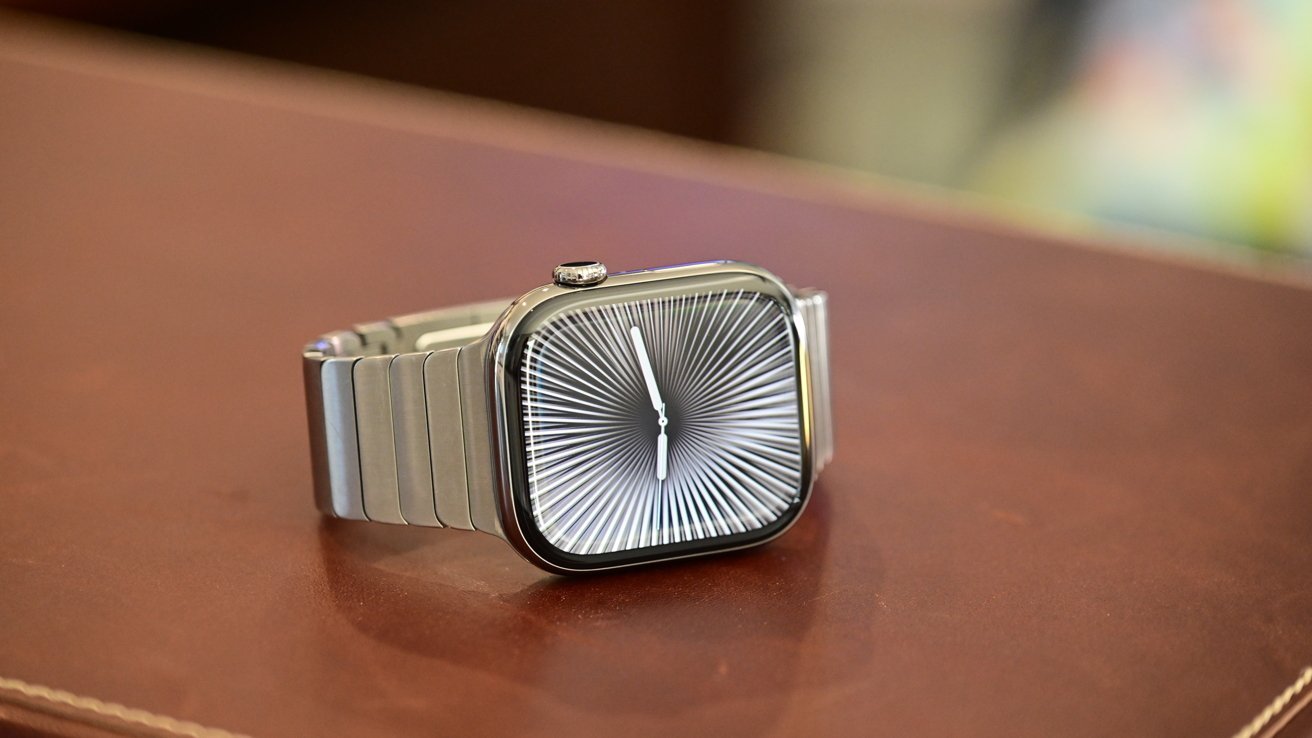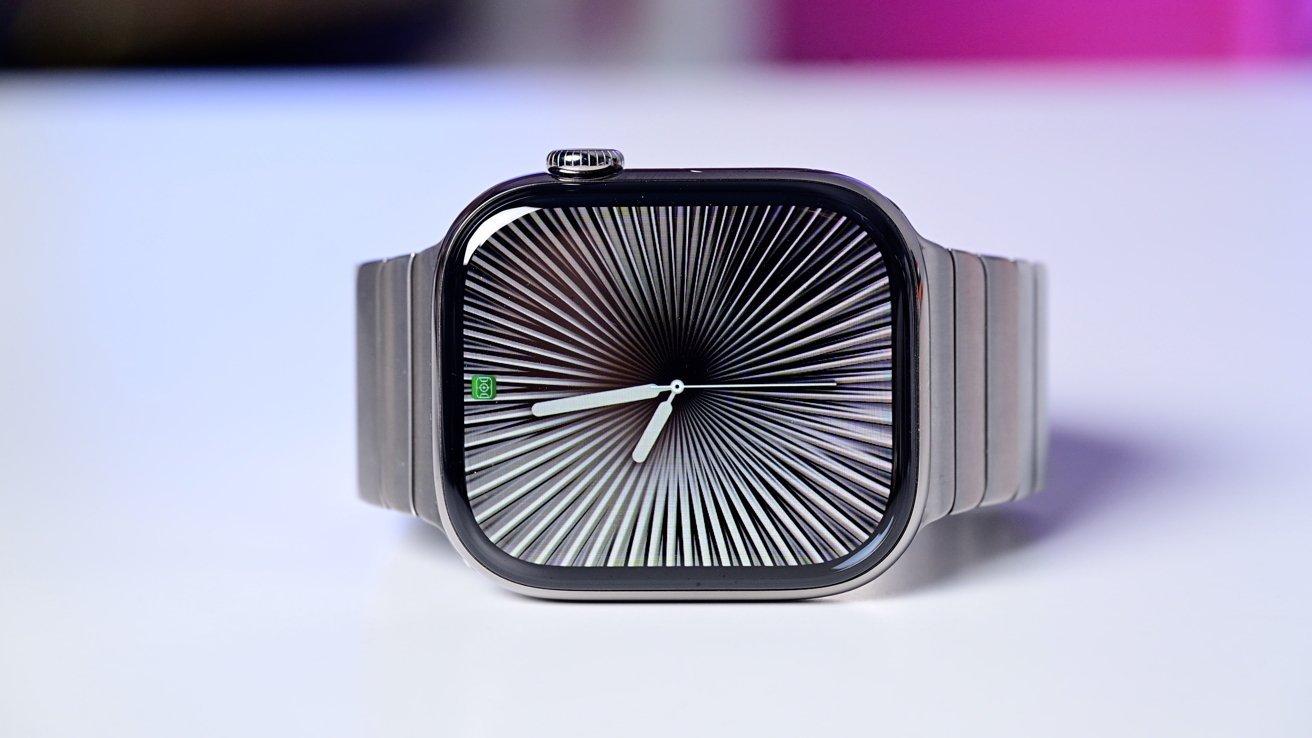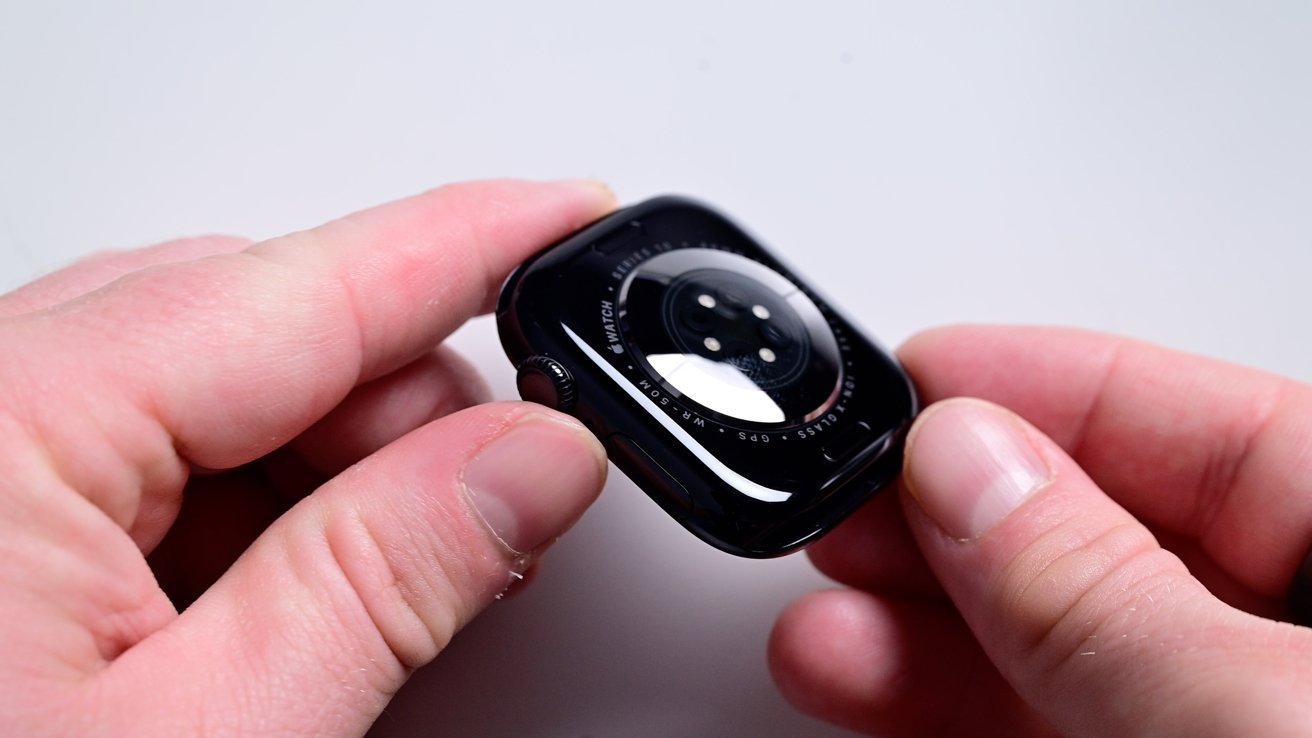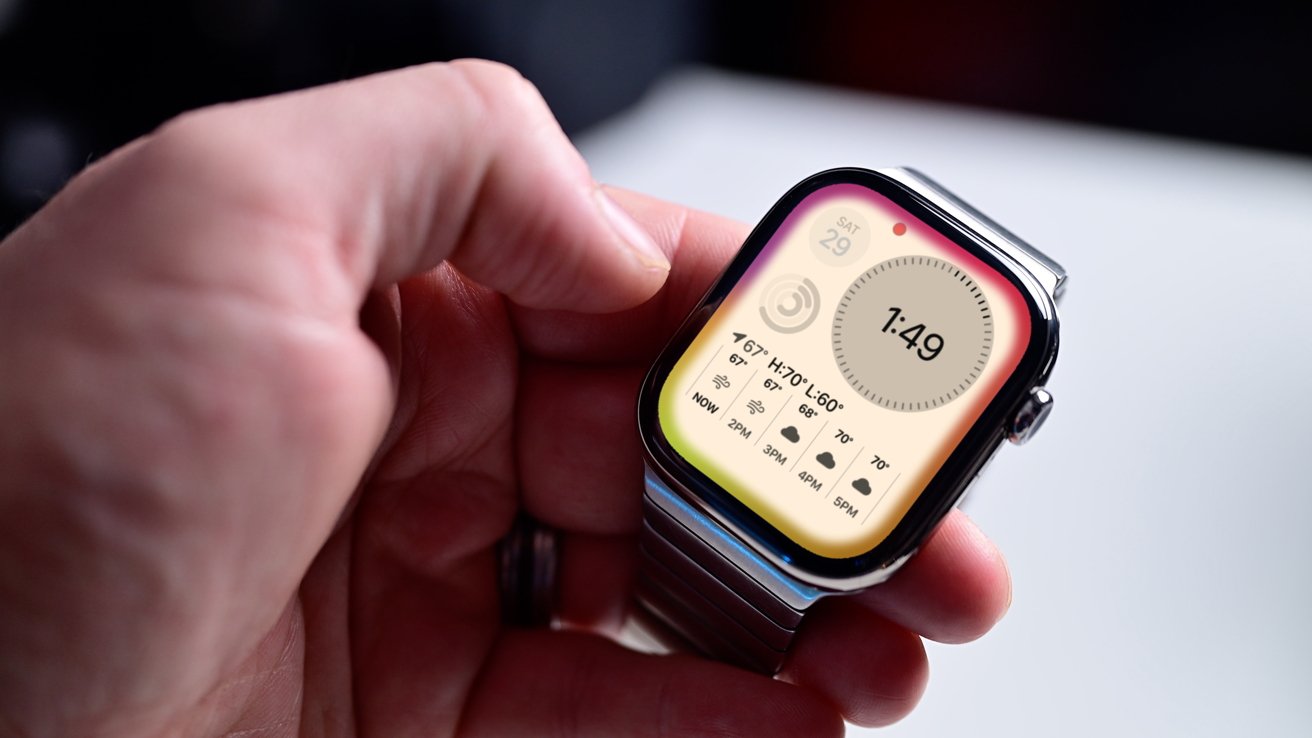Apple Watch Series 11: What's expected to arrive this fall
The Apple Watch Series 11 will probably arrive this fall alongside the iPhone 17. Here's what the next generation of Apple's smartwatch could bring to the table.
The Apple Watch Series 11 could look a lot like the Series 10
The Apple Watch is much like the iPhone and other products in Apple's ecosystem, in that it is often the subject of rumors and speculation. With Apple's famous regularity when it comes to releases, the rumor mill expects that the Apple Watch Series 11 will be arriving in the future.
Here's what analysts and leakers believe is on the way for Apple's next-gen wearable device.
Apple Watch Series 11 expected fall 2025
One of the easiest things to estimate for the Apple Watch Series 11 is its release date. We have Apple's extremely regular release schedule to thank for that.
With the exception for the October 2021 release of the Apple Watch Series 7, the Apple Watch has seen an update every year in September since the Series 1 in 2016. Without anyone saying otherwise, it's very likely that the same will happen again for 2025.
Part of this is because the Apple Watch launch coincides with the annual iPhone update, which for 2025 will be the iPhone 17. They are complimentary devices, so it makes sense for Apple to be unveiling them at around the same time of the year.
That said, Apple has sometimes divided down its massive launch schedule into multiple events across more than just one month. One year, it even managed to have three fall events across three months in a row.
There's always the chance that Apple could bump the Apple Watch to a later event than the September iPhone launch, but that seems unlikely.
Apple Watch Series 11 will look like the Apple Watch Series 10
Rumors for upcoming hardware often includes claims about changes in the external design. For the Apple Watch Series 11, it's more the opposite.
In January, a report from Bloomberg said that the Apple Watch Series 11 won't have a clearly visible redesign. It will look pretty much like the Apple Watch Series 11, at least externally.

The Apple Watch Series 10 redesign is expected to return for Series 11
This rumor does make sense to a point, as Apple does habitually reuse the same design of hardware for multiple generations, instead of coming up with new designs every time.
Since Apple last made external changes to the Series 10, the Series 11 is far more likely to look identical to its predecessor.
Leakers may have alluded to an all-glass Apple Watch being in the works, but that seems extremely unlikely for the near term. Maybe in a few years time, it could be a possibility.
Apple Watch Series 11's display
While the external hardware of the Apple Watch Series 11 will probably be very familiar, the screen will almost certainly be unchanged too. However, there have been previous reports on a technology change.
Apple currently relies on a flexible OLED screen in the Apple Watch. While the technology has been adequate so far, it could eventually make the change over to a microLED screen, which it has been working on for years.
There have been assertions that the display technology could be used in an Apple Watch as early as 2025, but such claims have repeated themselves over the years. Those claims have also leaned on it arriving in the Apple Watch Ultra first, which makes sense since the premium models tend to include newer technologies before others in the range.

The Apple Watch Series 11 screen may be practically the same too.
At the same time, Apple has had to deal with various setbacks in developing the technology, and even has been rumored to be pushing it back to 2026 as a consequence.
Sticking with the currently-used technology for the moment, one October report claimed that the Apple Watch Series 10 included a change in the backplane technology. The use of a low-temperature polycrystalline oxide thin-film transistor (LTPO TFT) backplane enables a dynamic refresh rate in an OLED screen, and the Apple Watch's always-on display.
The claim was that Apple shifted from using LTPO2 to LTPO3 in the Series 10. The change offers more power savings, as well as the possibility of higher refresh rates.
Whether Apple would go down the latter route is unclear, but battery savings are always handy. This will probably persist for the Series 11.
Apple Watch Series 11 will have the same health sensors
Much like the general design of the Apple Watch Series 11, the things it will be able to sense should also be fairly similar to the current-gen hardware. At least, on a sensor level, it should be quite similar.
The big one should be the inclusion of high blood pressure detection. There have been rumors of it being included in some way, but seemingly in notifying of extreme circumstances, not general blood pressure monitoring.

The Apple Watch Series 11's health sensing won't be a massive change from the current-gen model
The blood oxygen sensing feature that became a courtroom battle may yet make an appearance, as there's still time for Apple to win a ruling on the matter over Masimo. If so, it would mark the return of a feature that is not available in the United States, but is elsewhere in the world.
There's also the long-rumored glucose monitoring function to consider. However, while Apple is still working on making a sensor to perform that non-invasively, Apple's at least trialing software to help manage a user's blood sugar levels.
Apple Watch Series 11's chip changes
The easiest chip change to expect is the migration to the S11 SiP. There's no rumors about any changes in performance so far, nor are there expected to be any major innovations here since we're talking about a smartwatch.
While not a processor, there could be a change in terms of wireless connectivity. Apple's C1 modem exists, which certainly has the potential of being added to an Apple Watch.
It's certainly a power-efficient chip, which will be beneficial to a smartwatch. While it lack mmWave support, such high-speed connectively is unlikely to be needed by a wearable device.
There have also been murmurs that Apple is considering bringing some satellite-based features to the wrist. Though reports have centered on it being used in the Apple Watch Ultra 3, there's always a chance it could be included in the standard edition.
Apple Watch Series 11 software improvements, and Apple Intelligence
Following various rumors that Apple will be incorporating elements of the visual design of visionOS into iOS and other operating systems, it was inevitable for the claims to filter through to the Apple Watch.

Apple could add iPhone-assisted Siri to the Apple Watch Series 11
In April, reports said that watchOS 12 will bet a similar visual upgrade, including semi-transparent and revamped menus and icons. "Several ideas" were apparently in development, but with no real outline of what they would be.
The Apple Watch is also still an outlier when it comes to Apple Intelligence, as it doesn't have the capability to perform processing at a high-enough level for it to exist. While it cannot do so as a standalone piece of hardware, it may still get some of the benefits in watchOS 12.
This chiefly could consist of notification summaries, though the revamped Siri functionality could still be a possibility. Albeit one that could rely on Siri's processing being handled by a paired iPhone.
Read on AppleInsider


Comments
Perhaps the new Ultra version will offer something worthwhile.
I probably won't consider upgrading until Series 14 or 15. Hopefully they are able to get that functionality back by then.
linkman said: No. In fact, to be honest, even cuff measurements with a high-quality device can be tricky as far as getting consistent, accurate measurements. Position of your arm, placement of the cuff, time of day and current emotional state when tested can all skew your reading from "accurate." I've had back-to-back readings in a hospital vary by 20 points when I asked for a re-test because I knew the initial very high reading had to wrong since I regularly monitor my own BP.
AS USUAL, we can never expect significant changes, if any, in the next revision after Apple has refreshed a product. The Watch 10 got a refreshed design with a new chip and a new-ish display, so this year's "new" hardware will likely be identical. Any changes will come via the OS. The mystery card is the Ultra, now essentially unchanged for 3 years. Heck, Apple didn't even bother with an Ultra 3 last year, it just repeated the 2 with the added black colorway. From what I've read, even the "new" Apple Watch chips each year haven't really varied a whole lot since the series 6 or 7. Nor do I see a reason for a new, truly faster chip unless there's some new functionality that would require the added processing power. But with current functionality, the Watch is as snappy and fast as it needs to be.
The watch is not a medical device. To get an accurate blood pressure, you must be seated, feet flat on the floor, resting, and your arm horizontal with the desk and the cuff properly placed on your arm. The watch would never be able to do this. It would be practically impossible for Apple to get proper approval to claim the watch is a certified medical device for certain tests. Even the ECG sensor is not medically approved.
The watch is a fitness device. Even most developers have abandoned the watch. So Apple just improves the fitness aspect of the watch because the past 5 updates have been uneventful, and it looks like Watch 11 will be just like Watch 6, 7, 8, and 9, offering very little. I am not even considering replacing my Watch 5 because every version after offers very little, and I barely wear it now that I mostly work from home. It is pretty clear that Apple can't come up with anything significant with the watch. It still has the same design since the Watch 1, but at least the 10 has a decent improvement with screen size. I don't think I would ever buy another one. Charging it daily is a pain.
You are correct that the watch is not an approved medical device for any of its functionality, but the stories keep piling up about people who were "saved" by their Apple Watch because it alerted them to heart issues of which they were unaware and caused them to get it checked by a doctor. Better to find out that the alert was incorrect than to not know about a potentially fatal condition. I think the value in background blood pressure monitoring over time could be similar to background heart monitoring, even if the watch can't do on-demand BP tests. As far as the watch "never being able to do this," there is too much happening in the world of AI and electronic miniaturization to assume this will "always" be true.
Accurate blood pressure and glucose monitoring sensors are the holy grail of health features for a watch. The market for such a watch is absolutely massive.
Your blood Oxygen is usually 96-98%
So, I'd just keep the AW 10 for another year with no changes. But, launch new Ultra 3 in Sept that upgrades the SOC and offers satellite connectivity. Then tick-tock between the two so there is one AW update every year. And update SE every ~ 3 years
It's sad, but that's the reality of where this product category is now
Me for one. I have sleep apnea, and use the O2 sensor to monitor over night. If Apple and Masimo don't pull their heads out, my 7 will have to last at least another year.
I got an S10. My Watch before that was an Ultra. Before that was an S8. I don't expect to upgrade every year because I pay attention to what Apple is doing. The Ultra is a different Watch than the S8, and the S10 is a different Watch than both of them. The Ultra 2 isn't on my radar nor is the S11. But for someone who doesn't have an Ultra or a Watch newer than an 8 or 9, the 11 could easily be a notable improvement. The only thing that would induce me to get an S11 would be if it were going to be round like a Galaxy. Maybe the S12 or 13 will have a significantly faster processor, more storage, or brighter screen or be round, and I'll get one. Or not.
My Ultra, S8 and a couple of other Watches have the SPO2 sensor and I use it on occasion. The lack of that functionality didn't stop me from getting the S10 because a) it still has the sensor and b) its functionality can be restored with a software upgrade, if the legal battle is ever settled. Not the dealbreaker for me that it seems to be for others.
What's also weird is that Apple seems fine with not upgrading some products annually--Airpods Pro 2 will be 3 years old this September, is one example--so I'm not sure why they feel the Watch needs annual new models, especially since--as we've seen--the yearly "improvements" mostly don't justify it. Breakthroughs in new types of health sensors and battery life would be exciting to see, but those aren't things that Apple can just "do," the technology needs to get there first.
If I were Apple, I would stop numbering each new Watch model and just call them Apple Watch or the Watch Ultra (which is what Apple does for many other product lines) and release new models when there are exciting reasons to do so. These very incremental annual upgrades ultimately create the impression of a boring, unexciting product.